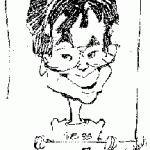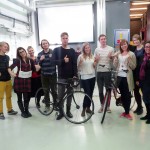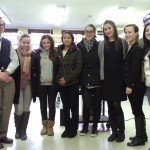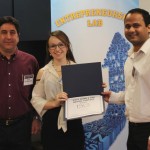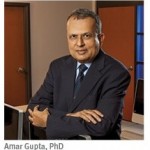 It is a bit of Pace folklore that in the 1960’s when asked why an accounting school should include an English department the then president Dr. Edward J. Mortola replied “because I want our accountants to have the best written reports”. It is in this same spirit of interdisciplinary support that current President Friedman places a large emphasis on making sure that all Pace students are outfitted with the information technology skills they will need for the 21st century.
It is a bit of Pace folklore that in the 1960’s when asked why an accounting school should include an English department the then president Dr. Edward J. Mortola replied “because I want our accountants to have the best written reports”. It is in this same spirit of interdisciplinary support that current President Friedman places a large emphasis on making sure that all Pace students are outfitted with the information technology skills they will need for the 21st century.
The man he has picked to spearhead this approach is Dr. Amar Gupta the new Dean of the Seidenberg School of Computer Science and Information Systems. A reception was held for him at the University Club on Tuesday January 8th 2013. At the reception he gave a speech entitled “Emerging Innovative Applications of Information Technology”.
Dr. Gupta comes to Pace University from the Eller College of Management at the University of Arizona in Tucson where he held an endowed professorship and was known for his role in nurturing new research and interdisciplinary programs, including one that allowed students to receive two graduate degrees and a certificate in entrepreneurship. He was a visiting scientist at MIT where he served as the founding co-director of the Productivity from Information Technology (PROFIT) initiative and has worked with large organizations such as IBM and the United Nations.
President Friedman praised Dr. Gupta saying that he joins the university at a pivotal moment in history and that he is very confident in his abilities. Dr. Gupta began his speech by talking about his “24-Hour Knowledge Factory”. An initiative that he developed it focuses on dividing a project into parts that are then passed off from team to team across the globe. Work may begin during the day in an American office, be passed off to an Australian or Chinese colleague, then to a colleague in Europe and finally back to the American office. The initiative promises to revolutionize how organizations approach problem solving since it allows the same number of man hours to produce products much more quickly in calendar time. As Dr. Gupta put it this new approach challenges the 1000 year old paradigm that distance is an impediment to business, instead it may serve as an asset by harnessing the best and brightest from across the globe.
Dr. Gupta also spoke about the need for interdisciplinary approaches to solve current problems such as healthcare. He gave several examples of the benefits of Telemedicine, which uses current information technology to connect patients with doctors that can help them treat their symptoms. This approach is particularly useful in rural parts of the nation where patients may be very far away from skilled medical practitioners. He compared the current problem to previous issues he encountered working with Citibank and IBM on check processing technology.
Dr. Gupta closed the speech by showcasing his plans for improving the university which include dual degree programs that reflect industry needs and setting up consortiums with large organizations and students. He also placed a great emphasis on interdisciplinary approaches to problem solving, bidirectional national flows of information and the importance of innovation.
People may rarely see the value of new technology initially but the value of Dr. Gupta to Pace University is clear and we are glad to have him on board.


